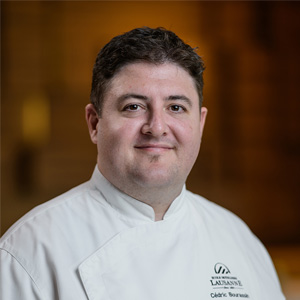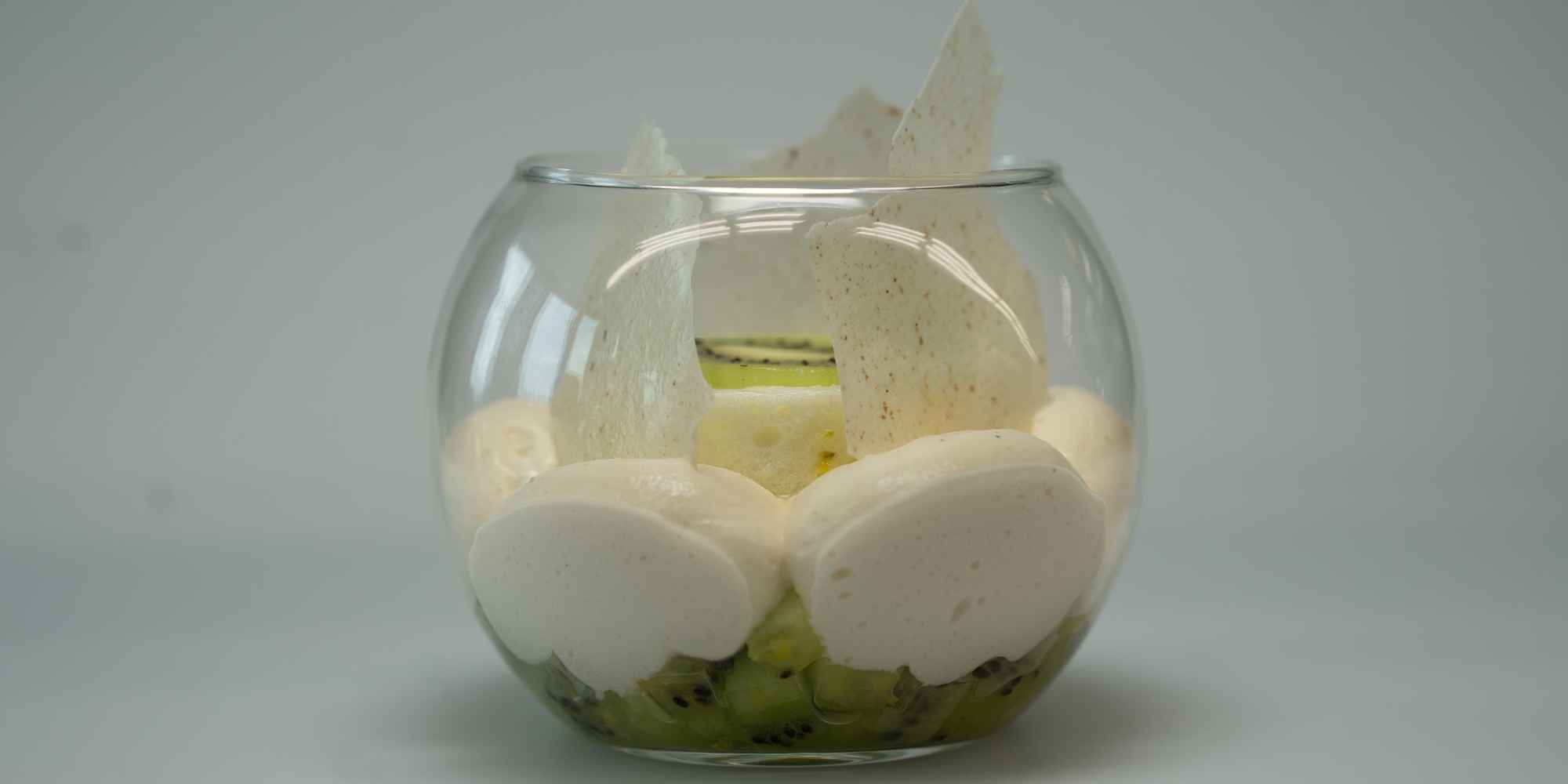EHL’s Institute of Nutrition R&D presents the spring season on a plate with a nutritious and delicious vegetarian menu to delight foodie fans of all types. As Hippocrates famously said, “Let food be thy medicine and medicine be thy food”, here we are reminded that behind many seasonal recipes lie specific healing properties to help us best align with the time of year. Enjoy your meal as well as your health!
Long live spring! Nature is waking up and so is the menu!
Asparagus and other crunchy vegetables, carefully cooked, are awakening our taste buds while the color green abounds. Rich in lutein, an antioxidant that protects the brain, asparagus is also full of vitamin B9 and folic acid which are necessary for the maintenance, repair, and production of our cells.
In terms of raw, living food, there are young sprouts, germinated seeds and small colored flowers that bring freshness and dynamism with their vitamins and micronutrients - real energy boosters! Not forgetting the hint of wild garlic, whose green leaves and white flowers stimulate our well-being, especially urinary. Garlic has many virtues: it is detoxifying for the liver, protective for the cardiovascular system and contributes to a healthy microbiota.
Local ham, without nitrite preservatives (increasingly available with small producers) adds more color to this dish.
In case you haven’t heard of tempura, it’s a light batter, (whose recipe is kept secret by Japanese cooks), made of a delicate blend of several flours and oils, such as cottonseed, whose viscosity guarantees the lightness of the batter. Although the details remain a mystery, this tempura brings to the beautiful Valais asparagus a softness inside and a crispness outside which delights the palate due to its unctuousness.
Then there’s the lassi - a fermented drink made from raw milk. It is precisely these ferments which produce a new source of life in the gut. The carbohydrates are transformed into lactic acid which help our intestinal well-being and participate in the reseeding of our microbiota with good bacteria. It is also rich in calcium, which is good for our bones. Accompanied by a preserved lemon in brine, another fermentation principle, the acidic flavor gives a boost and titillates our taste buds. Thanks to its richness in flavonoids – the reason for its yellow color - the lemon optimizes the cardiovascular system and reduces the risk of diabetes.
Fat, yes, good fat is key to life. To embellish the arctic char lake fish, we recommend a dash of walnut oil, rich in omega 3 fatty acids with anti-inflammatory and anti-cancer properties, as well as cardiovascular and cerebral protectors. These properties are also found in cruciferous vegetables, thanks to the sulforaphanes that are activated when they are cut or chewed.
As for ground ivy, its expectorant properties will calm down the last aches of the winter season!
Let's finish this meal by stocking up on vitamin C with kiwis from Morges, rich in soluble and insoluble fibers. The soluble fibers will be fermented by your microbiota and the insoluble fibers will ensure a better transit.
A menu rich in nutrition and health with guaranteed gustatory pleasure!
This menu was co-authored by Karine Dubrit, micro-nutrition doctor, Marianne Vellieux, micro-nutritionist, and Cédric Bourassin, Lecturer Practical Arts and Head Chef at the Berceau Des Sens (BDS), Michelin-starred teaching restaurant of EHL.
All the recipes and ingredients are for 4 people. Have a great summer and bon appétit!
Starter
For the asparagus boiled, in strips and tempura
- 16 green asparagus from Valais size 22+
- 50g tempura flour
- 75g of water
- Rapeseed oil for frying
For the crunchy vegetables
- 100 g peas
- 100 g of beans
For the wild garlic emulsion
- 200g of wild garlic
- 150g grape seed oil
- 2 soft-boiled eggs
For the preserved lemon lassi
- 250 g of yogurt
- 100 g water
- 1 piece of preserved lemon
For the dressing
- 120g (4 slices) of country ham
- 10g of sprouted alfalfa seeds
- 10g of sprouted mung beans
- 10g of sprouted lentils
- Some pansy flowers
Preparation
Prepare the tempura batter in advance by mixing the flour and water. Let the dough rest in a cool place. Heat a pan of salted water. Cut off the stems and peel the asparagus. Cook 12 asparagus in salted water. After 5 to 7 minutes of cooking, remove the asparagus from the water. Using a peeler, peel the remaining 4 asparagus lengthwise into thin strips. Heat the frying bath to 160°C. Quickly dip half of the thin asparagus strips into the tempura batter, then into the oil. Let them fry for 1 to 2 minutes, turning them over, then drain them on paper towels and season.
Heat a pot of salted water. Shell the peas and beans. The peas will cook for 5 to 7 minutes, while the beans will only need to be cooked for 2 minutes.
Set aside 200g of wild garlic. Blend the wild garlic leaves, add the soft-boiled eggs, then blend with the grape seed oil like a mayonnaise. Adjust the seasoning and set aside.
Mix the yogurt with salt. Add the sliced lemon and set aside.
Presentation
In a flat plate, place a leaf of wild garlic and three asparagus. Use a pipette or a spoon to pour a few drops of wild garlic emulsion and preserved lemon lassi. Arrange the asparagus, crisp vegetables, asparagus strips and country ham harmoniously on top. Decorate as desired with pansy flowers and sprouted seeds.
Main course
For the Arctic char
- 2 pieces of Artic char from Lake Geneva
- 15g of Moulins de Severy walnut oil
- 50g of butter
For the romaine lettuce juice
- 1 romaine lettuce
- Vegetable broth
For the cauliflower purée
- 1 cauliflower
- 3g plum seed oil
For the dressing
- 1 bunch of red radish
- 1 tray of ground ivy or sanguisorba
Preparation
Heat the butter in a large non-stick pan. Reduce heat, sear fish fillets about 2 minutes on skin side, turn over, continue cooking about 2 minutes, salt, set aside. Blanch the lettuces thoroughly and then cool them with ice cubes to fix the chlorophyll. Then add the vegetable stock. Blend. Cook the well-drained cauliflower heads in salted boiling water, then blend with 3g of plum seed oil.
Presentation
In a flat plate, dress according to your own creativity.

Dessert
For the kiwi marmalade
- 4 kiwi fruit from Morges
For the buckwheat espuma
- 30g of buckwheat
- 150g of liquid cream
- 150g milk
- 50g of egg yolk
- 30g of sugar
For the lemon blancmange
- 100g of egg white
- 30g of sugar
- ½ lemon zest
- ½ zest of lime
For the buckwheat milk skin tuile
- 10g of milk
- 12g buckwheat flour
- 5g sugar or xylitol
Preparation
For the kiwi marmalade, cut the kiwis into brunoise, set aside.
For the buckwheat espuma, roast the buckwheat seeds in a pole over medium heat without oil. Boil the cream in a saucepan, add the roasted buckwheat and let it infuse for 10min. Strain, add the milk and bring the new mixture to a boil. Whisk the egg yolks and sugar until the mixture turns white. Pour the milk-cream mixture over the yolks while stirring. Thicken on low heat for 5min without stopping to mix. Leave to cool in the fridge for at least 3 hours. Emulsify with a siphon or an electric whisk.
Whip the egg whites until stiff, mixing in the sugar in two batches and the lemon zest. Poach the whites on a filmed plate and microwave for two minutes at full power. Set aside in a cool place.
Preheat oven to 175°C. Mix the ingredients for the buckwheat milk skin tuile. Bring to a boil. Spread the mixture very thinly on a silicone sheet. Bake for 45min or until the tuiles are dry.
Presentation
Place the kiwi marmalade and buckwheat espuma in a verrine. Finish with the blancmange and pieces of tuiles.


Doctor in micro-nutrition

Micro-nutritionist

Lecturer in Practical Arts

Pastry Chef at the Berceau Des Sens (BDS), Michelin-starred teaching restaurant of EHL Hospitality Business School






